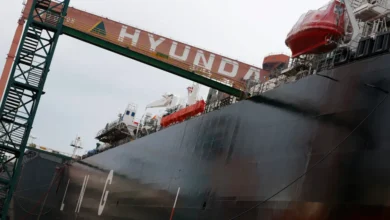Israel’s gas fields resume operations after shutdown during Iran conflict

Israel’s two natural gas fields that supply Egypt and Jordan and were shut down nearly two weeks ago due to the Iran-Israel conflict have resumed operations, partners in the companies said on Wednesday.
Two of Israel’s three gas fields, Chevron-operated Leviathan and Energean’s Karish situated off its Mediterranean coast, provide the bulk of exports to Egypt and Jordan, and have been shut since June 13.
That left in operation only the older Tamar field, used mainly for domestic supplies.
The halt of Leviathan resulted in a loss in revenue of $12 million, the partners said in a regulatory filing in Tel Aviv citing an initial estimate. They added they intend to examine the possibility of receiving compensation from the state in connection with the cessation of gas production.
Energean and NewMed, a partner with Chevron, confirmed that the two fields had started operations after Israel and Iran agreed to a ceasefire on Tuesday, but that process takes many hours.
Israel’s Energy Ministry said that after a security assessment, the larger Leviathan field and smaller Karish would reopen, leading to the resumption of gas exports, a rise in state tax revenues and greater flexibility in managing the electricity and industrial sectors.
Israeli gas accounts for about 15-20 percent of Egypt’s consumption, data from the Joint Organisations Data Initiative shows. The disruption to Israel’s gas supply had led Egyptian fertilizer producers to halt operations.
Leviathan produces 12 billion cubic meters of gas per year for sale to Israel, Egypt and Jordan. That will rise to some 14 bcm in 2026. Ratio Energies is a partner in Leviathan alongside Chevron and NewMed.
Two Egyptian sources told Reuters that imports from Israel were expected to rise gradually, with full operations likely by Saturday.
More imports come in the form of liquefied natural gas for regasification in Egypt. But while Egypt currently has three Floating Storage and Regasification Units (FSRUs), only one is operational.
The Energos Eskimo FSRU is expected to become operational soon, the sources said. The unit will be moved to the Sumed terminal, where it will be linked to the national gas grid.
“It could take around 11 to 23 days for the unit to become fully operational, although the Ministry of Petroleum could try to compress the time needed,” one sources said.










